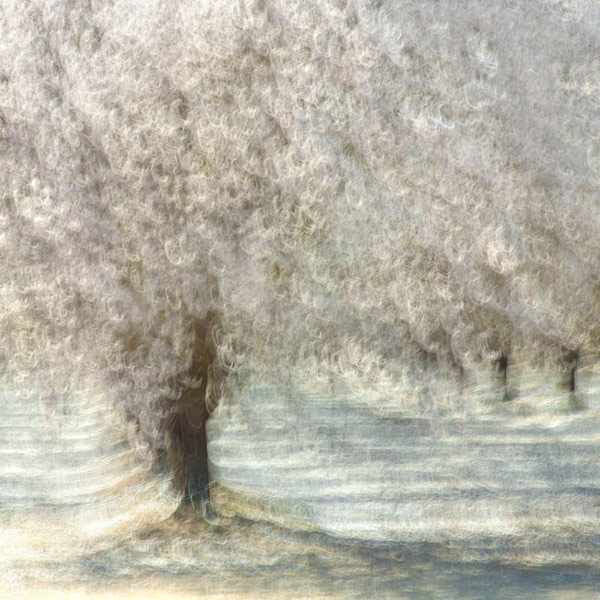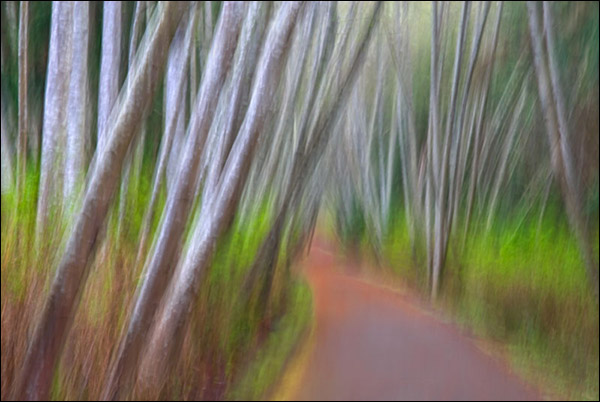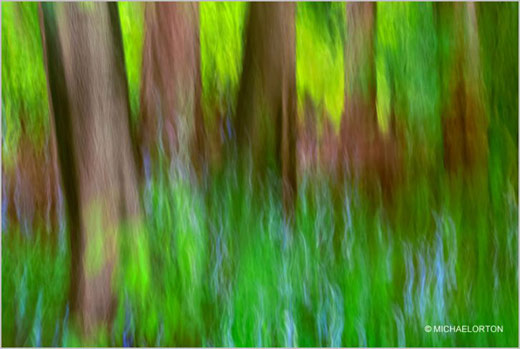Today was one of those days. After 35 years of carrying a camera I consider myself fortunate indeed to have experienced some of these days, when everything seems to align, the weather, the light, the season, the location, and let’s not forget, the photographer. After all, without the act of making the decision to set out, nothing will be created. While working in the stock photo business my workflow was quite different from today . My goal was to create marketable concept images and I would research locations to shoot specific images. I would have to place myself in the right location, at the right time with the best light which was not always easy. Remarkably I did have some of ” those days ” back then, but not like the ones that have occurred since I became immersed in ICM (Intentional Camera Movement) these last years. I have an intimate knowledge of the landscape within a close distance from home and can almost visualize before setting out the likelihood of there being the type of subject matter that will feed my imagination. And of course the more I explore the more data I have to draw from. With ICM the required “raw material”, unlike making a conventional photograph, is not a specific object or recognizable scene, but rather the starting point, like a piece of clay , shapeless until forged and formed into shape. This is the essence of working in this fashion. It has little to do with the actual technique of moving the camera and everything to do with how you can imagine and explore that which is the starting point, the raw material.
Today is a late fall day. Leaves had been falling for weeks, morning mists were beginning to appear, skies were a patchy blue. If I’m lucky this time of year lasts a few weeks. I love working when there are spaces in the trees and the branches contrast with the interspersed leaves. I set out to walk the edge of a river not far away. There are a variety of trees, bushes and growth, with logs, large and small stones lining the shoreline. (And the salmon are running ) I made many more than the four images shown, but these I selected because they were made standing in almost the same spot.
Image one is the light reflected off of the leaves of a small bush , which I rendered into hundreds of shards of light with a fast camera movement and short shutter speed. When viewed at full size this image has remarkable complexity and blending . The bush was a short distance to my left.
Image two is simply fallen leaves on a spread of medium sized round stones with the sand washed from between them. They are in the shade , and the blue comes from the reflected blue of the sky. The sky had some clouds which occasionally gave me overcast light. - 1/2 second with what I refer to as medium camera movement speed , using a somewhat oblique line and changing focal length during exposure. When I move my camera most often I do not swivel from a fixed point but move it in a similar fashion to a movie camera on a track. These stones and leaves where just to my right.
Image three is looking across the river . You can see the sandy embankment rendered as a softened wash while the trees and their reflection remain somewhat recognizable. I used an extended oval motion at 2 seconds to retain the vertical lines.
Image four is, yes wait for it, a photograph, and was taken standing in exactly the same spot as # 3 . Sometimes you just take what you are given and make the best of it. I took the polarizer and ND filter off, kneeled down and scooped this image from the surface of the river.The intricate, jagged lines of the reflected trees and a hint blue from the sky were to good to pass up. Handheld at 1/125.
So yes it was a good day. One that I wish every photographer could experience, because when you do, it will fuel your passion . This is what keeps us looking.
The video ” A Walk In The Palm Grove ” on our website is another good example of what can be created at one location.
There is no substitute for seeing… Michael
The preceding article is copyrighted and written by Canadian fine art landscape photographer Michael Orton. You can see more of his work at michaelortonphotography.com










